Five myths about Angus Young’s AC/DC guitar gear that people still believe
The AC/DC guitarist has always been reluctant to talk about his gear and tone, but we’ll help you bust some well-travelled myths.

Angus Young of AC/DC. Image: Manny Hernandez
There is perhaps no band more reflective of the pure unadulterated sound of rock ‘n’ roll. Angus Young might be small in stature, but his tone is stratospheric, and set the template for countless other bands, while establishing himself as one of true guitar icons of classic rock.
Angus has never been fond of talking about his gear or tone that much on record, and into that void has been poured a great deal of speculation and conjecture about how exactly the SG’s most famous exponent really gets those iconic guitar sound. Uncertainty breeds mythology, and along the way plenty of incorrect information has passed into common understanding – but never fear, we’re here to correct some of these inaccuracies, and give you a clearer picture of what Angus’s guitar tone is really made of.
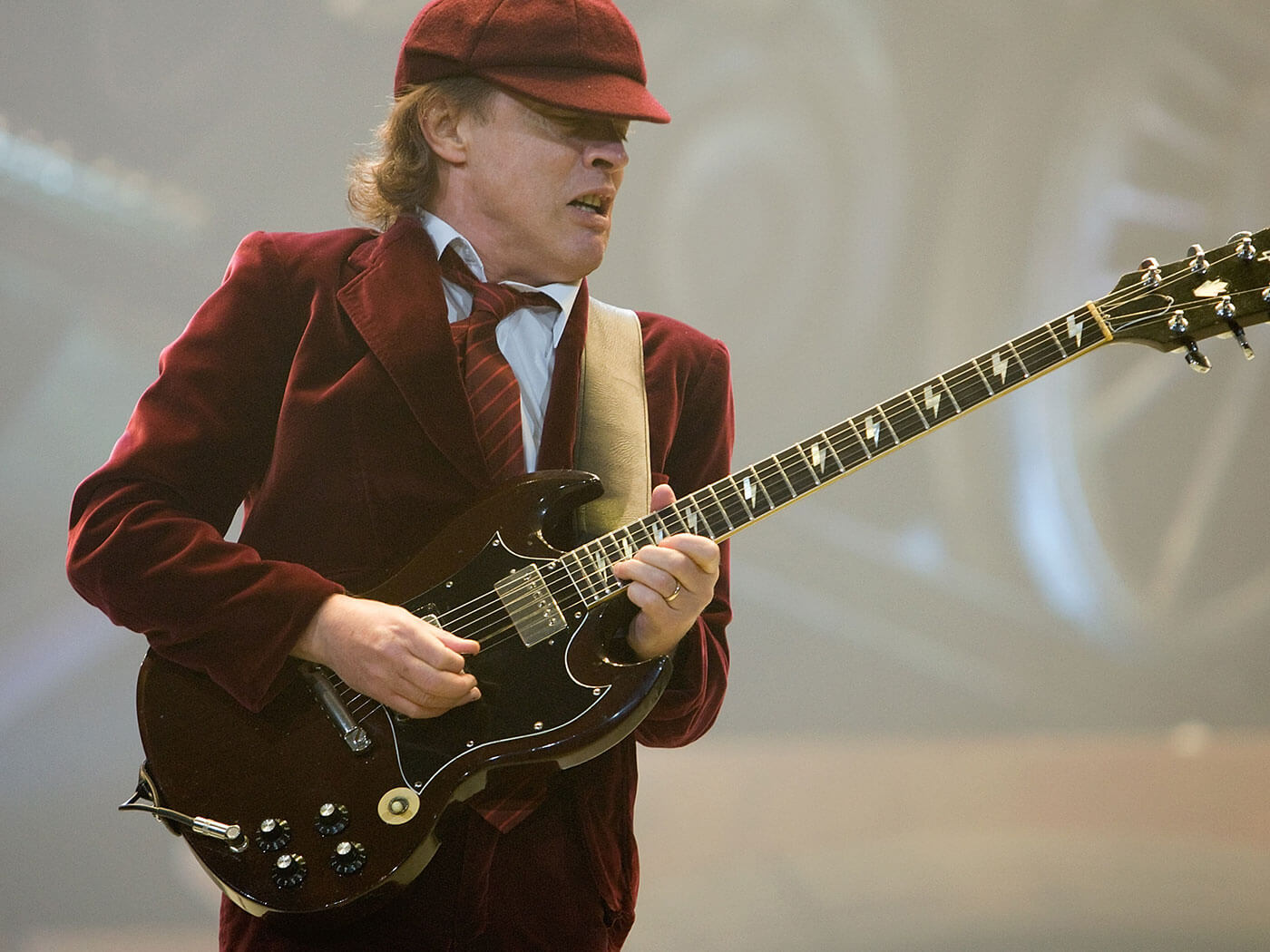
Angus Young used Marshall JTM45s
On Highway To Hell and Back in Black, Angus used a combination of his favourite amp, a 1970s four-input 100-watt 1959 Super Lead, along with another amp that many have mistaken for a JTM45, but it was actually the very rare Marshall JTM50 (made between 1966 and 1967). The JTM50 was an often-forgotten transitional amp between the JTM45 and the Plexi JMPs.
There are many places online that will claim Angus used a JTM45 for those records, but that is wrong – JTM45s differ sonically from JTM50s in that they are not as tight and responsive as their solid-state counterparts and their bass response is quite undefined, saturation levels are also different on the JTM50 compared to the JTM45. For these reasons, Angus always preferred the JTM50. Because the JTM50 was a transitional amp, some came from the factory with tube rectifiers and some with solid-state – Angus used the ones with solid-state, which resulted in a tighter, punchier response than those with a tube rectifier.
The reason for the confusion is that Angus was seen on stage with JTM45s, but according to [SoloDallas owner] Fil Olivieri, some of those amps had been converted over to JTM50 specs. This was done due to the scarcity of JTM50 amplifiers. That is not to say that Angus has never used a JTM45, as he does own several of them and does use them in the studio from time to time, in conjunction with other amps, but the JTM50 is what you’re hearing on those records.
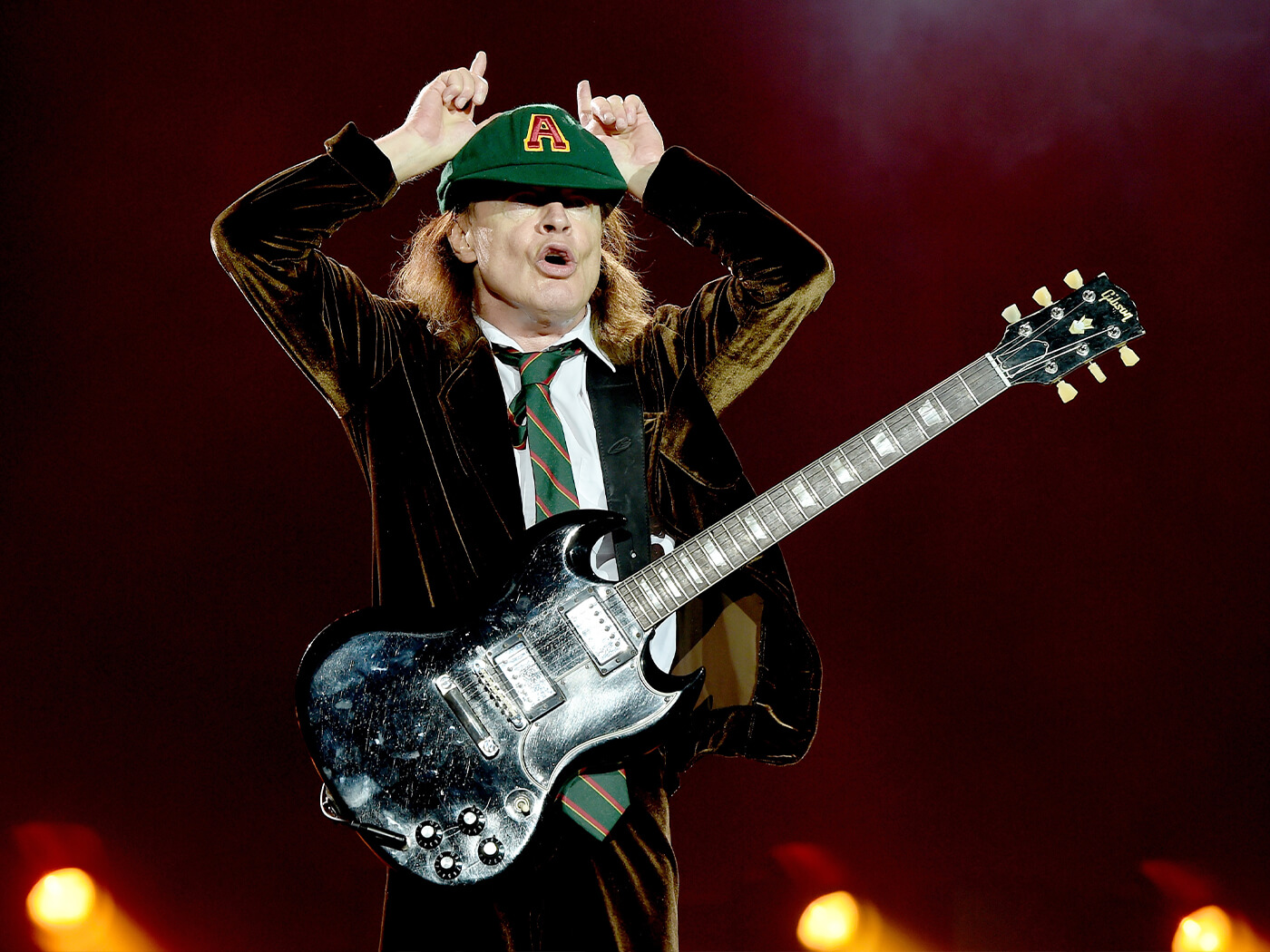
Angus Young doesn’t use effects
In an interview with Guitar Player in 1984, Angus was asked if he used any effects [on the Back in Black album], to which Angus responded, “I just have a Schaffer-Vega wireless system.” He was asked about it a month later in Guitar World and he elaborated, “Yeah, I use the Schaffer-Vega. I’ve been using that since ’77. On the receiver you’ve got like a monitor switch you can boost the signal and in the transmitter, you’ve got the same sort of thing. You can really give a guitar hell with ‘em. I have used the remote in the studio and it worked really good.”
The Schaffer Vega Diversity System (SVDS) was the first wireless unit ever created (circa 1975), by a genius of a man, Ken Schaffer. The unit allowed artists the freedom to roam the ever-growing stages in the 70s without the need for unwieldy long leads. KISS bought their SVDS units as a safety measure shortly after Ace Frehley was electrocuted on stage in 1976 and later found out it was pretty handy for some of the more ambitious onstage stunts (flying out over the crowd on cables…etc). Schaffer stopped making the units around early 1982, and went on to invent wireless monitors for Pink Floyd so that they could perform The Wall live, and many other inventions.
Now, today’s wireless units pride themselves on maintaining the integrity of the guitar tone, but the older technology in the SVDS altered the tone in some unintended, but fantastic ways. That’s why Angus used the wireless unit while in the studio, as did several other artists of that era including David Gilmour, Eddie Van Halen, and Peter Frampton.
And why did Angus and others like the sound of this wireless unit? Well, it’s simple – unlike most other wireless units, the SVDS had a preamp inside the receiver, essentially turning it into a boost that sat in front of the amplifier. There are also some other subtle and highly technical nuances that have to do with the way the signal is compressed and expanded and the effect of companding. The result is a little tighter tone with some enhancement on the high-end frequencies.
How important is this effect? Well, years later when SoloDallas main man Fil Olivieri was tirelessly researching the secrets Angus’ iconic tone, he realised the SVDS was the secret ingredient in the recipe, so much so that he started building replicas of the original units as well as simplified stompbox versions for fans to buy.
And if you need any more ringing endorsement of the importance of the SVDS, or the quality of SoloDallas’s recreations, according to Angus’s current tech, Trace Foster, he used SoloDallas Schaffer Replica Towers a lot in the studio for latest album, Power Up.
Fun fact: Ken Schaffer actually used a Dremel to rout out the back of Angus’ 1971 SG that was used on Back In Black, along with two other SGs, and installed the SVDS wireless transmitter into the back of the guitar. That’s why the transmitters were not seen attached to the straps on the Highway to Hell Tour. The cavity on the ’71 was not filled in until fairly recently.
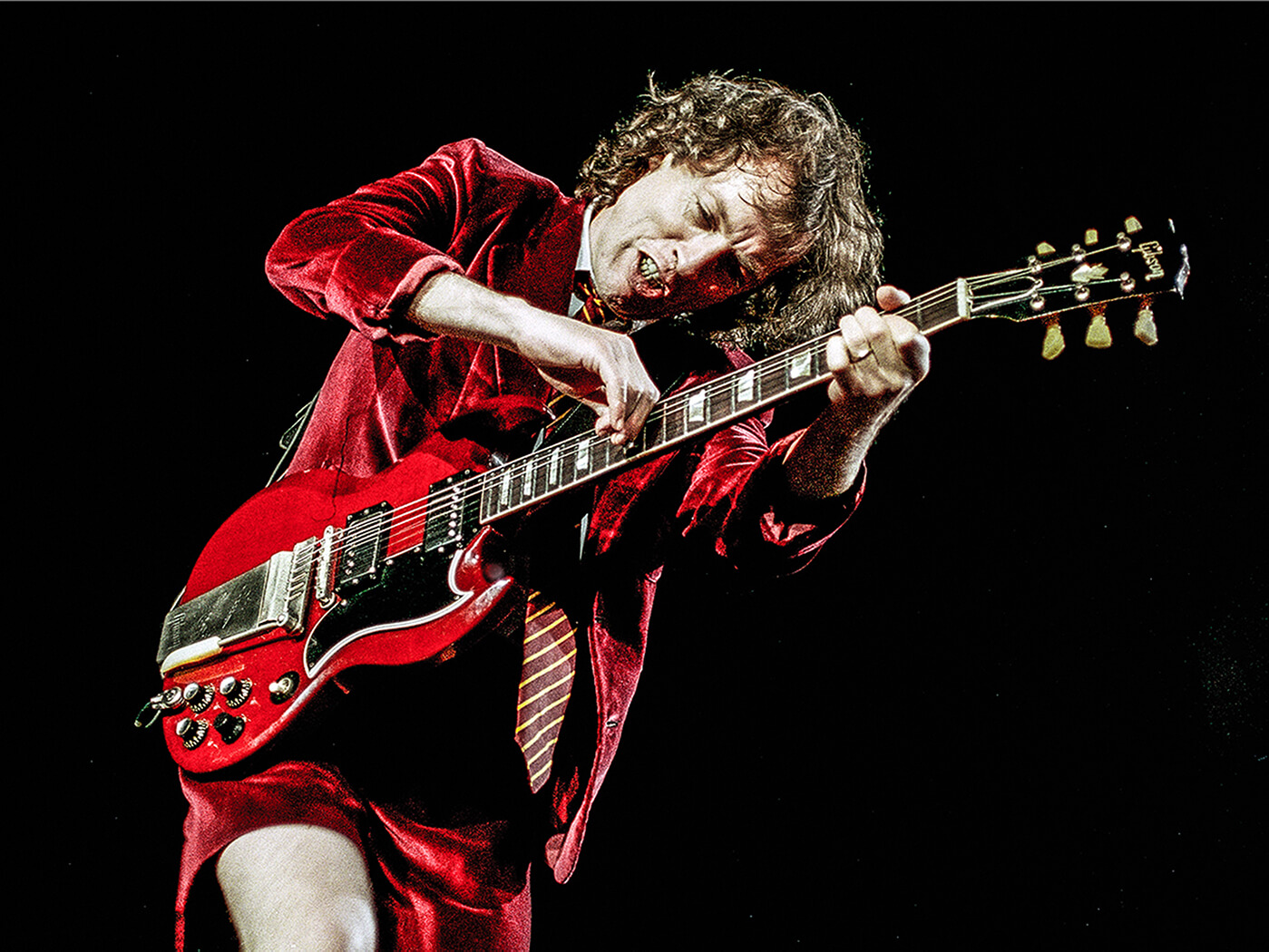
Angus’s ‘Favourite’ SG
There are very few artists who are more irrevocably linked to one style of guitar than Angus and his SGs. It would be strange to think of him holding anything else, and he owns over 100 of them. With that in mind, there are often debates online about which one is his favourite SG. His #1 guitar on the road will often change from tour to tour but he does have one SG that has been used on every AC/DC record.
It was retired from touring use about 10 years ago but remains in the studio and was used on the last record, Power Up. That guitar is a 1967 model, and was his first proper guitar that he bought in Melbourne when he first started out. That guitar went through some changes through the years, which has led to a lot of confusion. The 1967 SG causes some confusion because it has Angus’s trademark lightning inlays, which were added by John Diggins of Jaydee guitars, some people think this means it’s a ’71, others have called it a ’68. It’s a ’67.
Later on, Gibson did a limited run of 50 replicas that were based on that ’67 SG [although Gibson calls the guitar a ’68]. Those guitars came out of the Gibson Custom Shop and did not have a serial number – they were hand-signed by Angus and even featured an odd neck which is believed to have been a factory flaw. The neck is much thinner and wider than any other SG to have left the Gibson factory in those days.
The thin neck resulted in some tuning stability issues and that’s why when Gibson released another run of guitars, the ‘Angus Young Signature SG’, they changed the neck a little bit, making it more of a standard profile that would make it a little easier to play, thusly appealing to a larger audience. Some people claim that Gibson’s Angus Young Signature was a copy of the Jaydee Guitar, but that is not true. John Diggins did make a custom “Jaydee SG” for Angus (as he also has for Tony Iommi), but that is not the guitar that Gibson made replicas of.
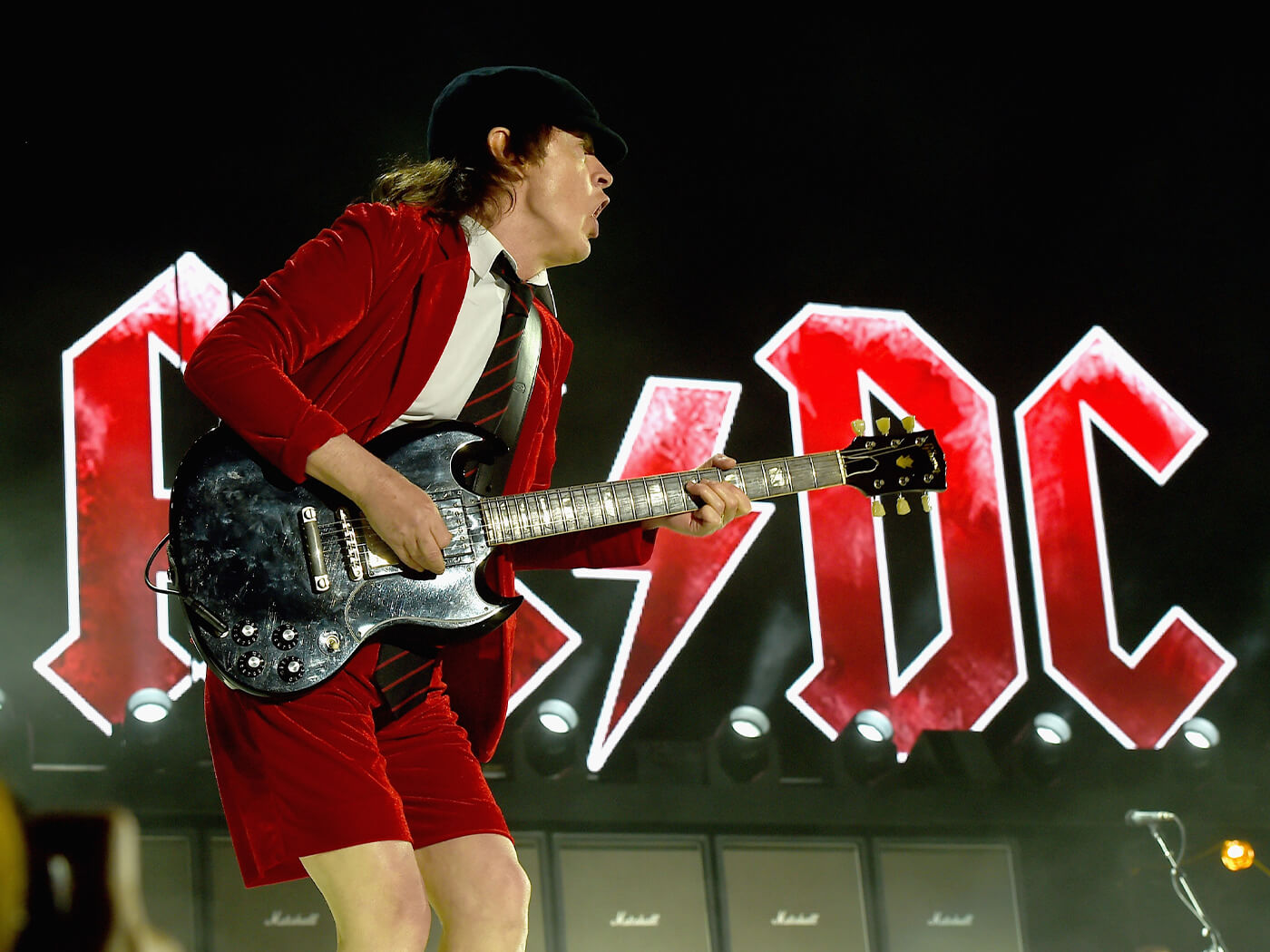
Crank it up to 10
The most common myth I hear regarding AC/DC is that its “easy to play” or that it’s easy to replicate the tone of Angus and Malcolm. People claim you just crank everything up to 10 and play the riffs. But there are some subtleties to their tone that are often overlooked by the casual listener. If you’ve seen AC/DC play live, you may notice that Angus will control his tone using the volume knob.
He always plays the bridge pickup and essentially switches between his rhythm tone and his lead tone using his volume knob. His rhythm tone is somewhere around 8 and for his lead tone, he will bump it up to 9.5 or 9.75. Some have claimed that Angus uses his tone knob a lot in the studio and live. But that’s not true, he rarely uses his tone knob, if ever.
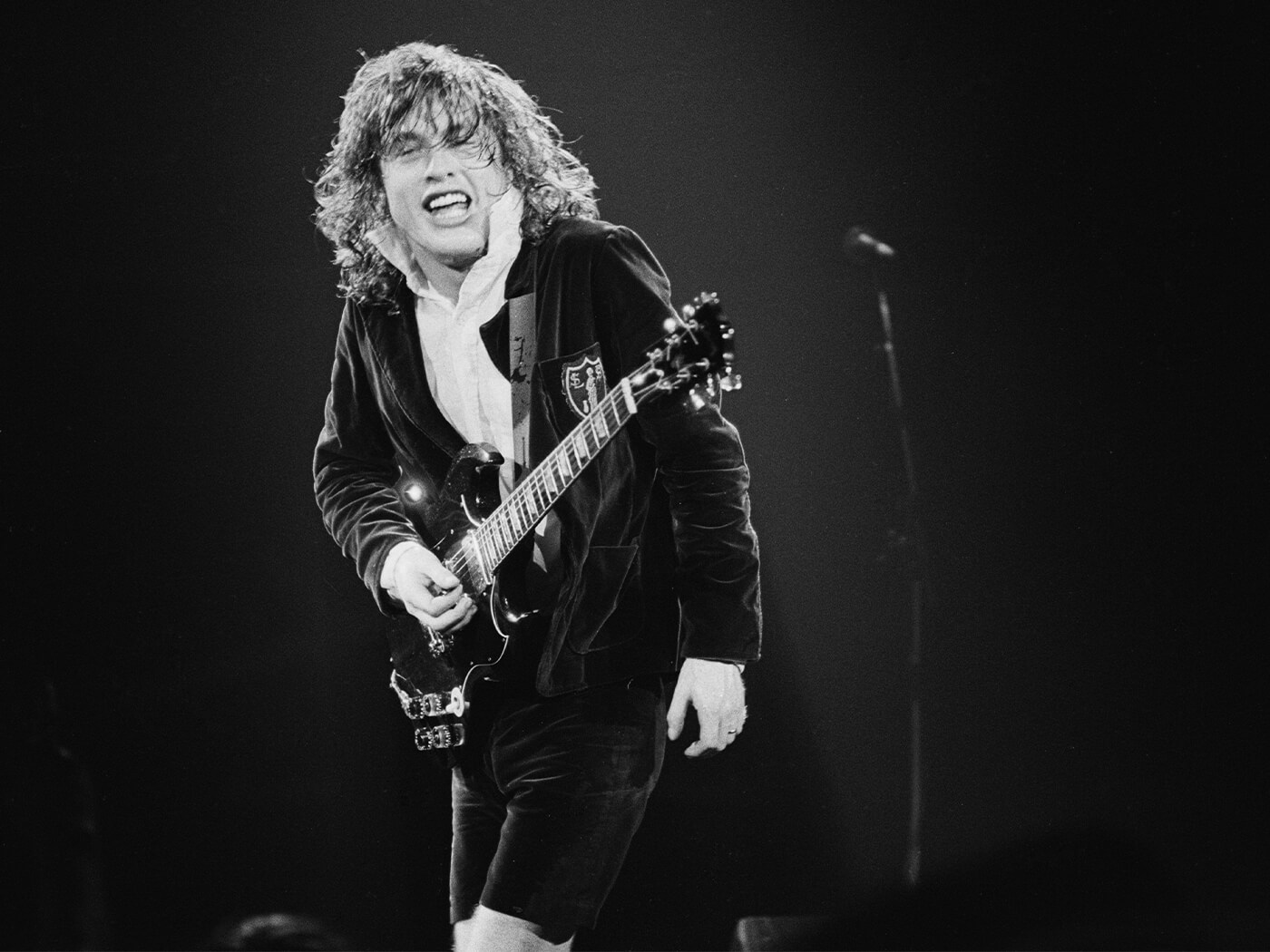
The true secret of the Angus Young tone…
“I don’t think anyone can get that Angus tone without having the neighbours call the cops, because it’s about 128dB in his wedge. An airplane taking off is 135dB or so,” that’s what Angus Young’s tech Trace Foster told us recently, and in many ways that’s the true secret of nailing that sound – volume.
“I would meet people who would tell me, ‘oh man I captured Angus’ tone. I’ve got this pedal…’ and I would just laugh because you’re already wrong.” He explains. “The thing with AC/DC, in general, their tone is really clean and clear, the tone comes from sheer volume. If you listen to the Malcolm, and now, the Stevie [Young] tone, when you strum it, it sounds like a beautiful, clean, crispy, Marshall tone. But if you hit that guitar, and I mean you freaking HIT IT, that’s the sound.
“Stevie would go through a pick every song. The picks would be sawn in half. That’s the attack and that’s where you get that tone. For Angus, we would set the amp to where it seemed like it was going to explode at any minute. That’s the thing we have the liberty to do that most people don’t. You and I can’t set our amps to that extreme because we can’t afford to put new transformers in it. But to get Angus’ tone, and you turn it up all the way until the speaker completely exerts itself, meaning the cone moves forward but can’t move back, then you back it off to where it’s got movement again. That’s where that sound comes from. It’s not from a pedal.”
For more features, click here.
